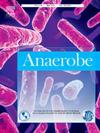Dogs in Rio de Janeiro as reservoirs of Clostridioides difficile ribotypes causing CDI in humans
IF 2.6
3区 生物学
Q3 MICROBIOLOGY
引用次数: 0
Abstract
Introduction
In the past decade, the incidence of community-acquired Clostridioides difficile infection (CA-CDI) has increased, suggesting a role for community reservoirs such as animals in its spread.
Objective
This study aimed to isolate and characterize C. difficile strains from domestic dogs at veterinary clinics to enhance our understanding of C. difficile epidemiology in Rio de Janeiro.
Material and methods
For this study 90 stool samples from dogs were collected and cultured in a selective medium (Clostridioides difficile Brucella agar – CDBA) for isolation. Species were identified by MALDI-TOF MS, with confirmation provided by PCR targeting the tpi gene. The antibiotic susceptibility test of the strains was performed using five antibiotics: vancomycin, metronidazole, moxifloxacin, rifampicin, and erythromycin. Strains resistant to metronidazole were further analyzed for the presence of the plasmid pCD-METRO using PCR. The presence of toxin genes (tcdA, tcdB, and cdtB) was investigated, alongside ribotyping and tcdC sequencing analyses. The strains were also tested for biofilm formation and motility.
Results
C. difficile was isolated in 15.5 % (14/90) of the samples. Among the strains analyzed, 87.71 % (12/14) tested positive for both toxin genes tcdA and tcdB and belonged to ribotypes 106 (10/14) and 014/020 (2/14). The remaining 14.3 % (2/14) were non-toxigenic and were identified as ribotype 010. Regarding the antibiotic profile, 42.85 % (6/14) of the strains exhibited resistance to at least one antibiotic, including vancomycin (1/14) and metronidazole (1/14). The metronidazole-resistant strain was also positive for the plasmid pCD-METRO. All strains exhibited both biofilm formation and motility. Among the 12 toxigenic strains sequenced for the tcdC gene, two exhibited a deletion in the same region as the epidemic strain, NAP1 (RT027).
Conclusion
Our study found some overlap between C. difficile ribotypes isolated from dogs and from cases of CDI in humans, and the C. difficile prevalence was higher in dogs with diarrhea (p = 0.034).
里约热内卢的狗是导致人类 CDI 的艰难梭状芽孢杆菌核糖型的储存库。
简介:在过去十年中,社区获得性艰难梭菌感染(CA-CDI)的发病率有所上升,这表明动物物种在其传播中扮演了重要角色:在过去十年中,社区获得性艰难梭菌感染(CA-CDI)的发病率有所上升,这表明动物物种在艰难梭菌感染的传播中扮演了重要角色:本研究旨在从兽医诊所的家犬中分离艰难梭菌菌株并确定其特征,以加深我们对里约热内卢艰难梭菌流行病学的了解:本研究收集了 90 份犬粪便样本,并在选择性培养基(艰难梭菌布鲁氏菌琼脂 - CDBA)中进行分离培养。通过 MALDI-TOF MS 鉴定菌种,并通过针对 tpi 基因的 PCR 进行确认。使用万古霉素、甲硝唑、莫西沙星、利福平和红霉素五种抗生素对菌株进行抗生素敏感性测试。利用 PCR 技术进一步分析了对甲硝唑耐药的菌株是否存在质粒 pCD-METRO。在进行核糖分型和 tcdC 测序分析的同时,还调查了毒素基因(tcdA、tcdB 和 cdtB)的存在情况。此外,还对菌株的生物膜形成和运动能力进行了检测:结果:15.5%(14/90)的样本中分离出艰难梭菌。在分析的菌株中,87.71%(12/14)的毒素基因 A 和 B 均呈阳性,属于核型 106(10/14)和 014/020 (2/14)。其余 14.3%(2/14)无毒性,被鉴定为 RT010。在抗生素谱方面,42.85%(6/14)的菌株对至少一种抗生素表现出耐药性,包括万古霉素(1/14)和甲硝唑(1/14)。耐甲硝唑菌株的质粒 pCD-METRO 也呈阳性。所有菌株都有生物膜形成和运动能力。在对 tcdC 基因进行测序的 10 株致毒菌株中,有两株与流行菌株 NAP1(RT027)在同一区域出现缺失:我们的研究发现,从狗身上分离出的大多数艰难梭菌核型都与人类的 CDI 病例有关,而且在腹泻的狗中发病率更高(p = 0.034)。虽然我们无法证实这些狗的腹泻完全是由艰难梭菌引起的,但它们的定植可能是人类艰难梭菌感染的常见传播途径。
本文章由计算机程序翻译,如有差异,请以英文原文为准。
求助全文
约1分钟内获得全文
求助全文
来源期刊

Anaerobe
生物-微生物学
CiteScore
5.20
自引率
8.70%
发文量
137
审稿时长
76 days
期刊介绍:
Anaerobe is essential reading for those who wish to remain at the forefront of discoveries relating to life processes of strictly anaerobes. The journal is multi-disciplinary, and provides a unique forum for those investigating anaerobic organisms that cause infections in humans and animals, as well as anaerobes that play roles in microbiomes or environmental processes.
Anaerobe publishes reviews, mini reviews, original research articles, notes and case reports. Relevant topics fall into the broad categories of anaerobes in human and animal diseases, anaerobes in the microbiome, anaerobes in the environment, diagnosis of anaerobes in clinical microbiology laboratories, molecular biology, genetics, pathogenesis, toxins and antibiotic susceptibility of anaerobic bacteria.
 求助内容:
求助内容: 应助结果提醒方式:
应助结果提醒方式:


